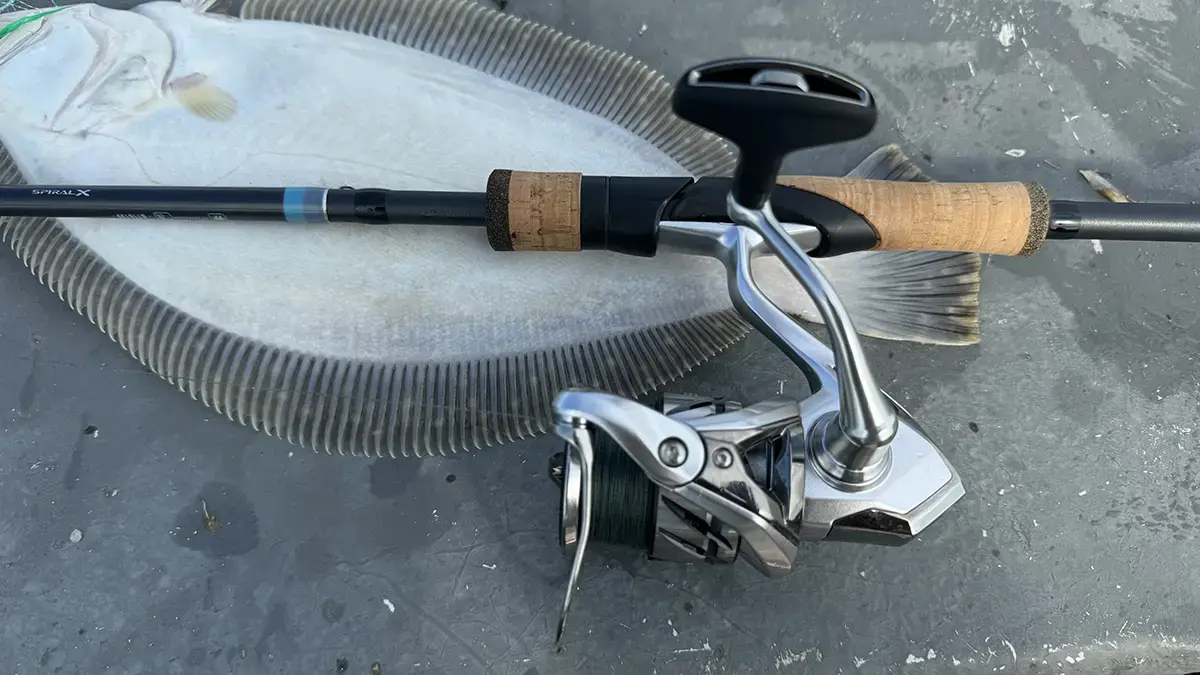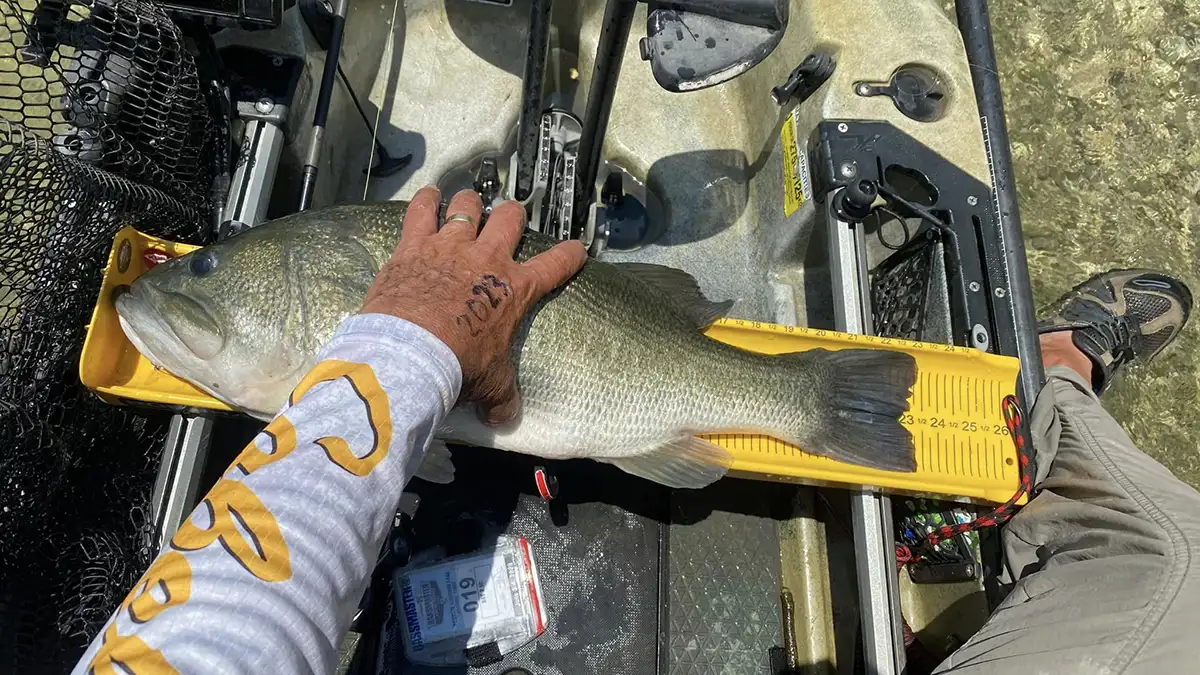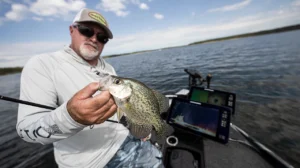The Shimano Stradic FM was introduced just before ICAST 2023, and took Best of Category for freshwater reels at the show. In the hand, it is lighter than the previous versions of the reel, and the operation is smoother. Though marketed for freshwater anglers, I’ve found it to be a capable performer in the salt, too. Here’s the rundown on my new favorite spinner, the Stradic C3000XG FM.
LONG LINE OF STRADICS
Shimano introduced the Stradic line in the early 1990s. I came upon my first few somewhere around high school graduation in 2001, purchasing several sizes at a discount through the now-defunct retailer Galyan’s, where I worked in the hunting and fishing department. Recognizing a good deal when I see one, I snagged models in the 1000, 2500, 4000 and 5000 sizes.
The largest two got the biggest workout, getting used on the inshore grounds for striped bass, bluefish and weakfish, the Northeast’s version of a sea trout. The others saw trout, panfish, and bass duty. I retired the 5000 around 2018 after the roll pin holding the handle gave up the ghost, but I have it shoved in a drawer in hopes I can find a replacement. The others are still in service, used mostly for smallmouth action in creeks. Because of their long life and excellent performance, I’m happy to add the latest generation to my arsenal.
TRICKLE DOWN REELONOMICS
The Stradic line has always benefited from the technology in Shimano’s more expensive reels. As a feature gets proven in a top of the line model, Shimano moves it into the others in its lineup. This means that Stradic has a lot of the same DNA as flagship models like the Stella, at a fraction of the cost. Highlights include cold-forged gears with extended teeth that distribute stress over a wider surface area for more durability and smoother operation. The drag system is powerful, but also built to last as the washers offer up to 10 times the durability of older models. To keep water out, Shimano applied a water-resistant coating and added channels that usher liquid away from the internals. Those fishing mono or flouro will appreciate the elastic polymer anti-twist fin on the underside of the roller, which helps with line management.
TESTING THE STRADIC FM 3000
I mounted the Stradic FM 3000 on a G Loomis NRX+ inshore spinning rod. For the past month, I have been using it for soft plastics, topwater plugs, and light-tackle jigs. The reel only weighs 7.9 ounces, and the pair makes for one of the lighter, if not the lightest, inshore combos I’ve ever used. I have taken stripers to 36 inches, bluefish to 27, and summer flounder (fluke) to just a maddening hair under 19 with it. So far, the reel has stood up to everything I’ve thrown at it with no ill effects. Based on the longevity of the other Stradics in my roster, I have no reason to suspect I won’t get a decade or more out of this one.
CAPABLE DRAG SYSTEM
I used to prefer reels in the 4000 to 5000 size for inshore stuff, but I’ve been able to downsize since the advent of braided lines. I didn’t use a line counter when I spooled the 3000 FM, but Shimano’s literature tells me there should be about 170 yards of the 15-pound-test PowerPro I put on there. This will be more than enough for most striper, trout, or redfish applications—and darn near everything you’re likely to encounter in sweetwater.
With thin-diameter braids offering increased line capacity, the limiting factor in these smaller reels often becomes the drag system. A striped bass does not take off on the blistering runs a tuna is capable of, but they can pull better than any largemouth I’ve ever encountered. I’m sure I only had the drag dialed down about halfway and nowhere near the 20 pounds the FM is capable of, it slowed everything easily, with more stopping power in reserve.
Fearing the sharp teeth of bluefish, my leaders never dipped below 15-pound-test so I can’t say for certain exactly how the drag performs with really light lines. But I never felt any sort of start-up inertia on any of the runs, leading me to believe that if I had to really scale down for a finesse presentation the reel would protect light lines.
SMOOTH OPERATOR
One of the construction elements that allows the Stradic C3000XG FM to punch above its weight class is what Shimano calls “X-Ship.” The pinion gear, which is responsible for turning the reel, is supported on both ends. This keeps the internals in alignment even when under pressure, ensuring nothing binds up. Tighter tolerances and increased gear meshing were also machined into the reel, which eliminates slop in the drivetrain and quiets everything down. Hooksets, even jarring ones, are instant with no signs of slipping. I never felt any deflection in the gears, or the body itself for that matter, when fighting bass or blues.
And reeling remained smooth, even when fighting to gain back ground. With a 6.4 gear ratio, the C3000XG takes up about 37 inches of line per rotation. This meant I really had to slow down my retrieve when trying to crawl soft plastics along the bottom, but shortened time between drifts as “lines up” went faster. The 6+1 ball bearings are currently like butter, and with reasonable care they should remain that way, shielded from the elements on both sides.
GO LONG
The spools in the Stradic FM series are what Shimano calls “Long Stroke.” They are a little taller than standard, and move up and down further than normal. This translates to longer casts because the line is spread out on top of the spool’s surface, not buried under itself. Even weightless soft plastics seemed to cast like tins, which allowed me to keep the boat further away from the shallows. But unlike other spools of the long cast variety, I didn’t have any issues with line lay. So far, it has remained even no matter how fast or slow I crank line in.
TROUT, BASS, AND BEYOND
The Stradic FM series is available in 1000, 2500, 3000, 4000 and 5000 sizes. Trout anglers in need of a smooth, lightweight reel to pair with an ultralight rod should look no further than the 1000 model. If you need an all-arounder capable of panfish and bass duty, grab a 2500. And if you deal with larger species in fresh or salt, consider the larger models. Just make sure to attach it to a light rod, or it will seem out of balance.
But if you don’t think this fits the bill for you, check out our roundup of the best spinning reels for more options.













